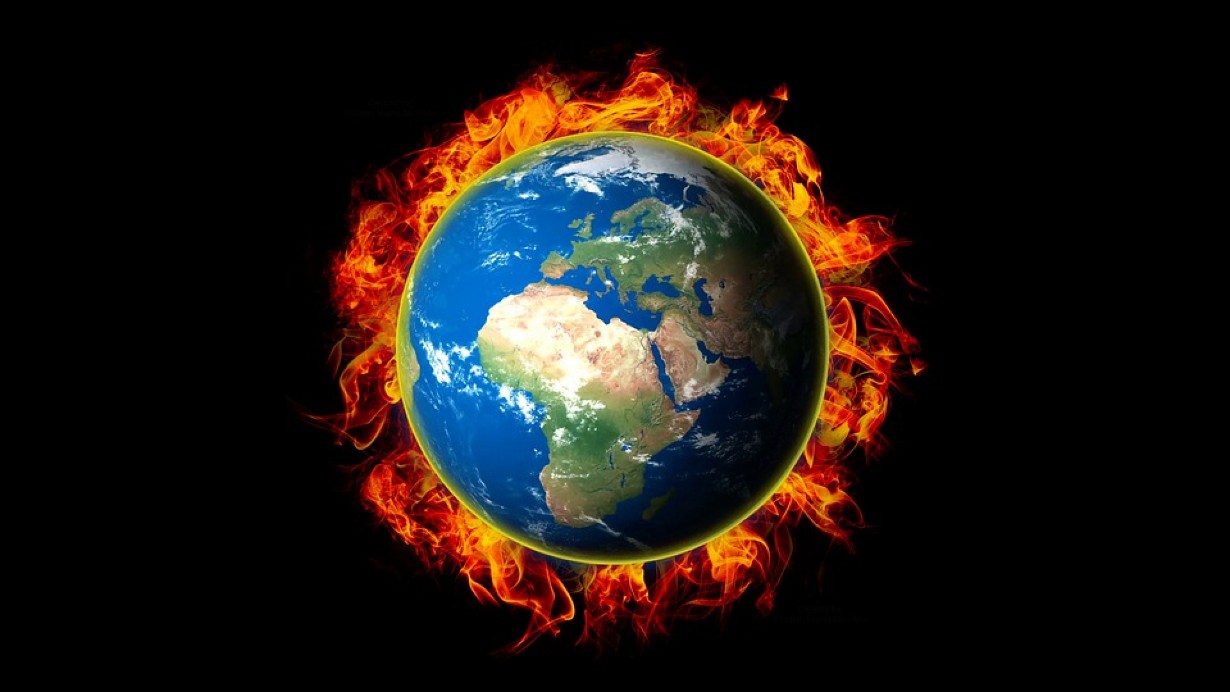Group Captain Arvind Pandey (Retd)
From November 6 to 20, the 27th Conference of the Parties to the United Nations Framework Convention on Climate Change (COP27) held high-level and side events, critical negotiations, and press conferences, hosting more than 100 Heads of State and Governments, over 35,000 participants and numerous pavilions showcasing climate action around the world and across different sectors.
Representatives from other organizations and institutions, including space agencies, advocated for Earth observation to be more firmly secured as a legitimate means of verifying climate targets, especially in the monitoring, verification, and reporting (MVR) of the goals set in the Paris Agreement.
Climate Monitoring From Space
Satellite data plays a pivotal role in observing variability and change in the Earth system. Significant progress has been made in observing the Earth globally with higher temporal and spatial resolutions, which was impossible before the advent of satellites.
With satellite observations of the Earth, we have been able to construct global views of many variables across the atmospheric, oceanic and terrestrial domains, including global earth surface warming, ozone cover, cloud cover, precipitation, sea surface topography, fluctuation in polar ice mass, changes to the sea shores and land surface.
Indeed, with some satellite observations now spanning more than 40 years, this information for climate monitoring purposes is now invaluable.
Space Sensors
International Space Station (ISS), orbiting at about 250 miles above the Earth’s surface, with various sensors to monitor different climate change variables, is one of the major entities in this aspect.
Space for climate observatory (SCO) is one of the significantly established forums which gather satellite data and products from the European Union, French, and German Space Agency.
On November 15, 2022, the United Nations Environment Program signed the SCO International Charter. This signature concretizes the collaboration of the SCO with the WESR, World Environment Situation Room, which gathers environmental studies and data that the SCO will regularly add to the charter for earth observation.
Climate Change Variables
Earth Atmosphere Monitoring
A lot of activities take place in an atmosphere, and all these are required to be monitored. Some of the activities are the creation of the carbon dioxide layer, the study of the ozone layer, the monitoring of methane emission, the quantity of water vapor, and the role of clouds in temperature reduction.
Greenhouse gases include all emissions contributing to an increase in global temperature, and several methods are employed to monitor them.
Achieving net zero by the second half of the century is vital if global temperatures remain well below the two degrees rise as set out by the Paris Agreement for the climate. From their vantage point in space, satellites provide a unique means of tracking progress towards achieving this balance between greenhouse gas emissions from sources and removal by sinks.
Changing Ice sheets
Polar ice-sheets store more than 99% of Earth’s freshwater ice on land. Even modest changes can influence global sea levels, increase coastal flooding, and disturb oceanic currents.
Shrinking Of The Cryosphere
The cryosphere – the areas on Earth where water is frozen – plays a vital role in moderating global climate, which is shrinking as per the available data.

Rising Sea Levels
Modeling also helps in all these areas for understanding the severity in the future, which guides the community for the proposed action. Sea level has risen globally by around 15 cm during the 20th century and is rising more than twice as fast at a rate of 3.6 mm per year.
Volcanic Eruption
Volcanic plume indicates a threat to climate change, and their detection provides the amount of sulfur dioxide and thermal ash in the atmosphere. This facilitates insight into disaster management due to any onslaught of tsunami or threat due to volcanic ash and way ahead for further climate change mitigation.
Disaster Management
Several surface and sub-surface activities result in disasters induced by natural calamities. Disaster management authorities also use data generated by these sensors for management and rescue purposes. Flooding and landslides are the most common events every year.
Global Coordination For Net Zero
United Nations General Assembly adopted a resolution in September 2015 as the “2030 agenda for sustainable development with 17 sustainable development goals(SDGs) and was further shaped in December 2015 in the ‘Paris agreement on climate change.’
In these 17 SDGs, three goals correspond to climate action and its dependents. Goal number 13 corresponds to climate action, goal number 14 to life below water, and goal number 15 to life on land – describing a path to be followed by all nations.
COP27 has spotlighted the relevance of Earth observation data for climate action more than ever. The Parties have also decided to implement the Global Climate Observing System (GCOS), recognizing “the vital importance of robust Earth observation systems and related long-term data records.”
The global community must think and act fast to create sustainable Earth for living beings.
- Group Captain Arvind Pandey(Retd) is a geospatial intelligence professional. He is trained in the full spectrum of imagery analysis in aerial and space-borne sensors and has vast experience creating geospatial infrastructure.
- Reach out to the author at arvind.pandey65 (at) outlook.com
- Follow EurAsian Times on Google News





